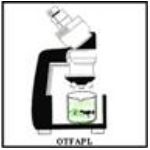AGLS 6502 Lecture 20.3 - The Javelina or Quenk: Behaviour
Peccaries are gregarious, living in groups whose sizes may range from 2 - 50, but groups of 5 - 15 animals are common (Nowak, 1991; Robinson and Eisenberg, 1985). The collared peccary is a highly social species (Byers and Bekoff, 1981). The peccaries live in a stable, mixed sex group of sex ratios of 1:1 (Byers and Bekoff, 1981).
Males do not compete vigourously for oestrous females (Anon, 1975; Nowak, 1991; Byers and Bekoff, 1981). The level of hostility was negligible during mating (Byers and Bekoff, 1981). In free ranging peccaries, the dominant or alpha male copulates with most of the oestrous females in the herd (Bissonette, 1982).
Short tending bonds were observed involving the adult male and oestrus females. These bonds may last from a few hours to several days (Bissonette, 1982 after Lowe, 1970, Bissonette, 1976). During this time the male remains within a few metres and does not allow other males to approach (Bissonette, 1982). In penned conditions females are usually dominant over males in most situations (Bissonette, 1982 after Sowls, 1974).
Though tolerant of other herd members, strange peccaries were never able to join new herds. Byers and Bekoff (1981) reported a lone peccary after 7 months of trailing a wild herd, was continually met with hostility. High genetic relatedness within groups may occur (Bissonette, 1982). Ellison and Harwell (1969) indicate that there is some interchange of males between herds. The interchange between territorial groups in free ranging herds appears infrequent (Bissonette, 1982). Association of groups depended on their level of contact and appears to be related to the scent gland (Bissonette, 1982).
During feeding the collared peccary showed little aggression. Byers and Bekoff (1981) revealed that there was tolerance between adults and juveniles, who enjoy much liberty up to 5 months. back to top
Helpful Links, Photos, Videos and Multimedia
